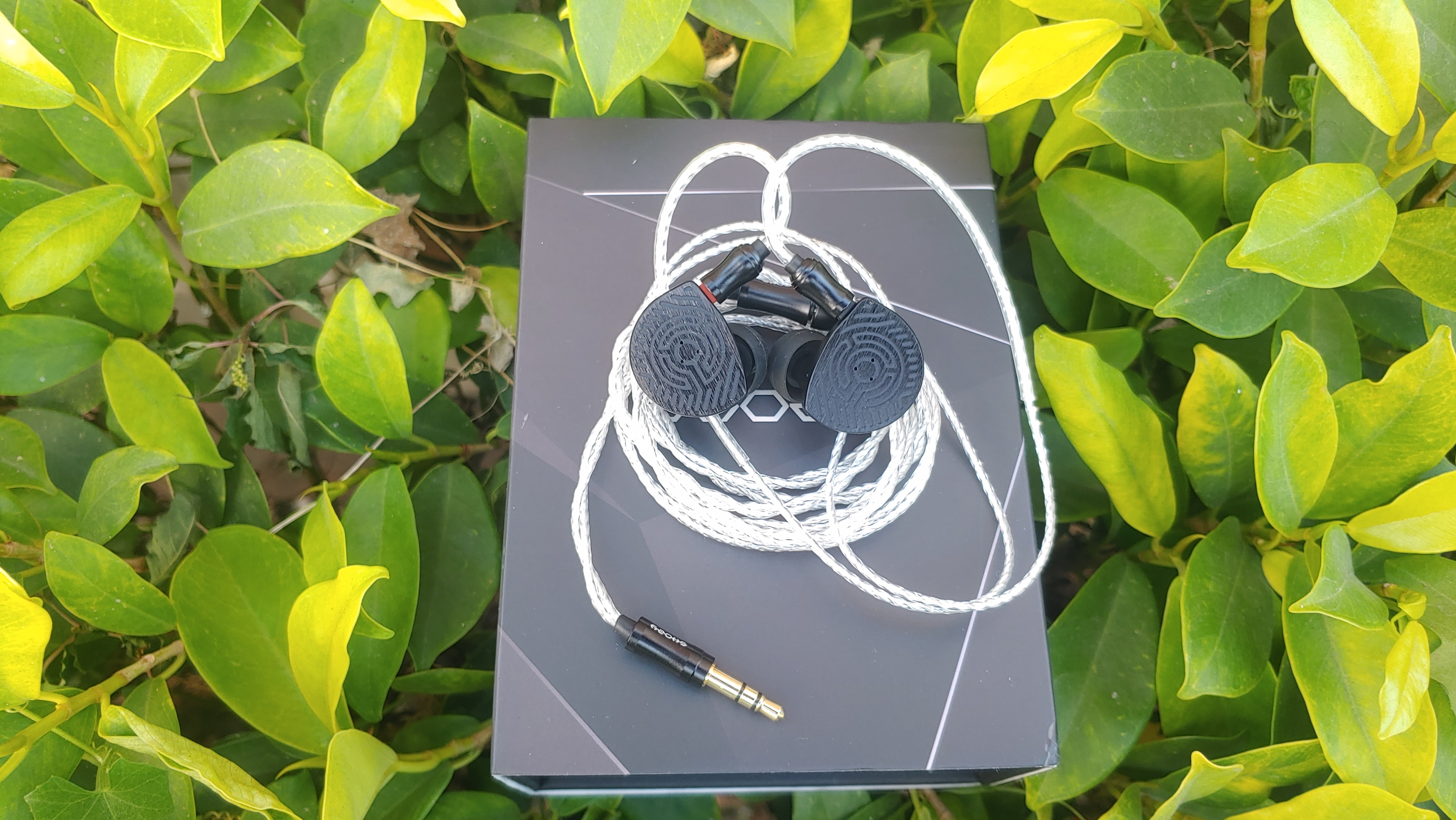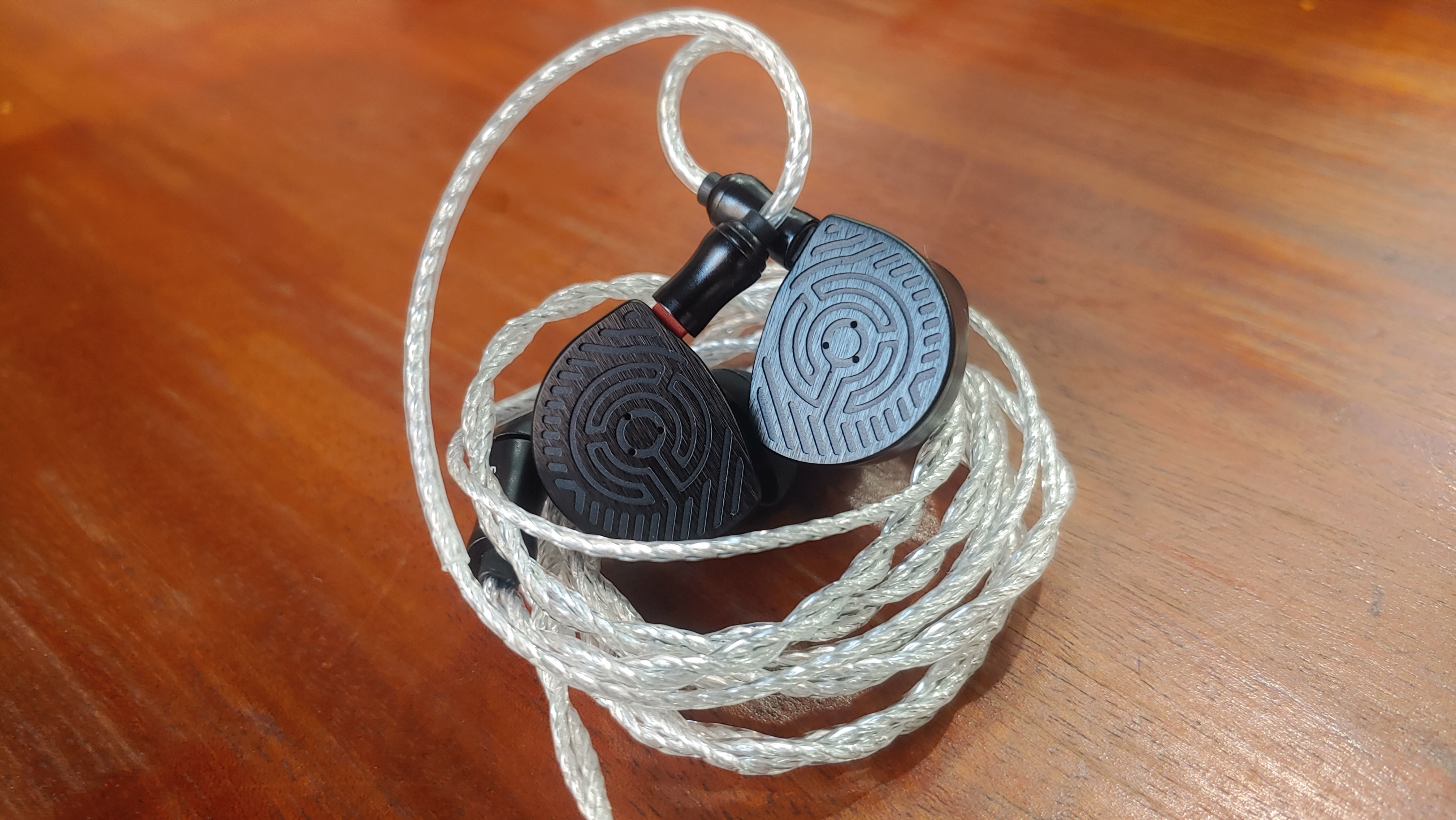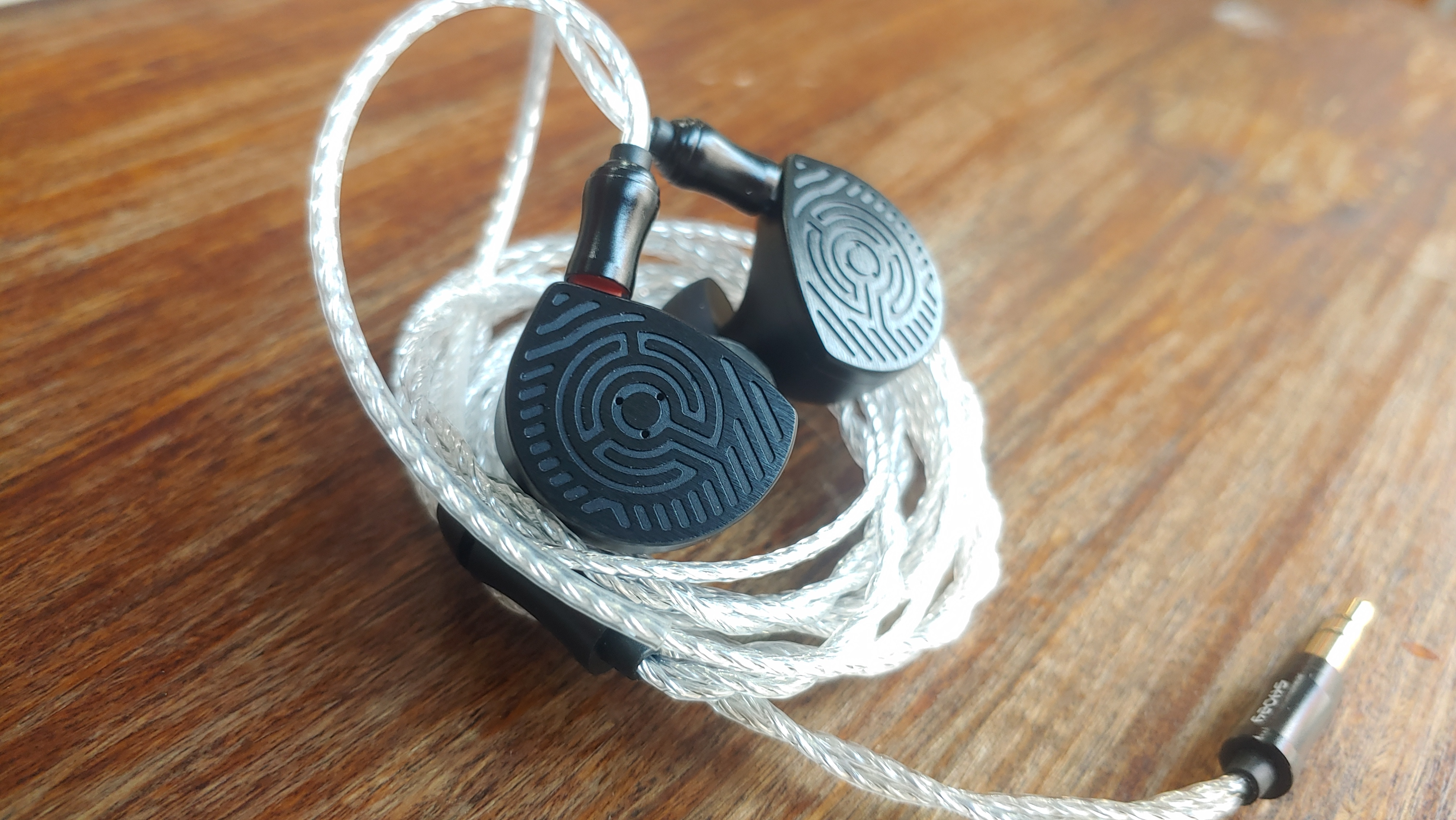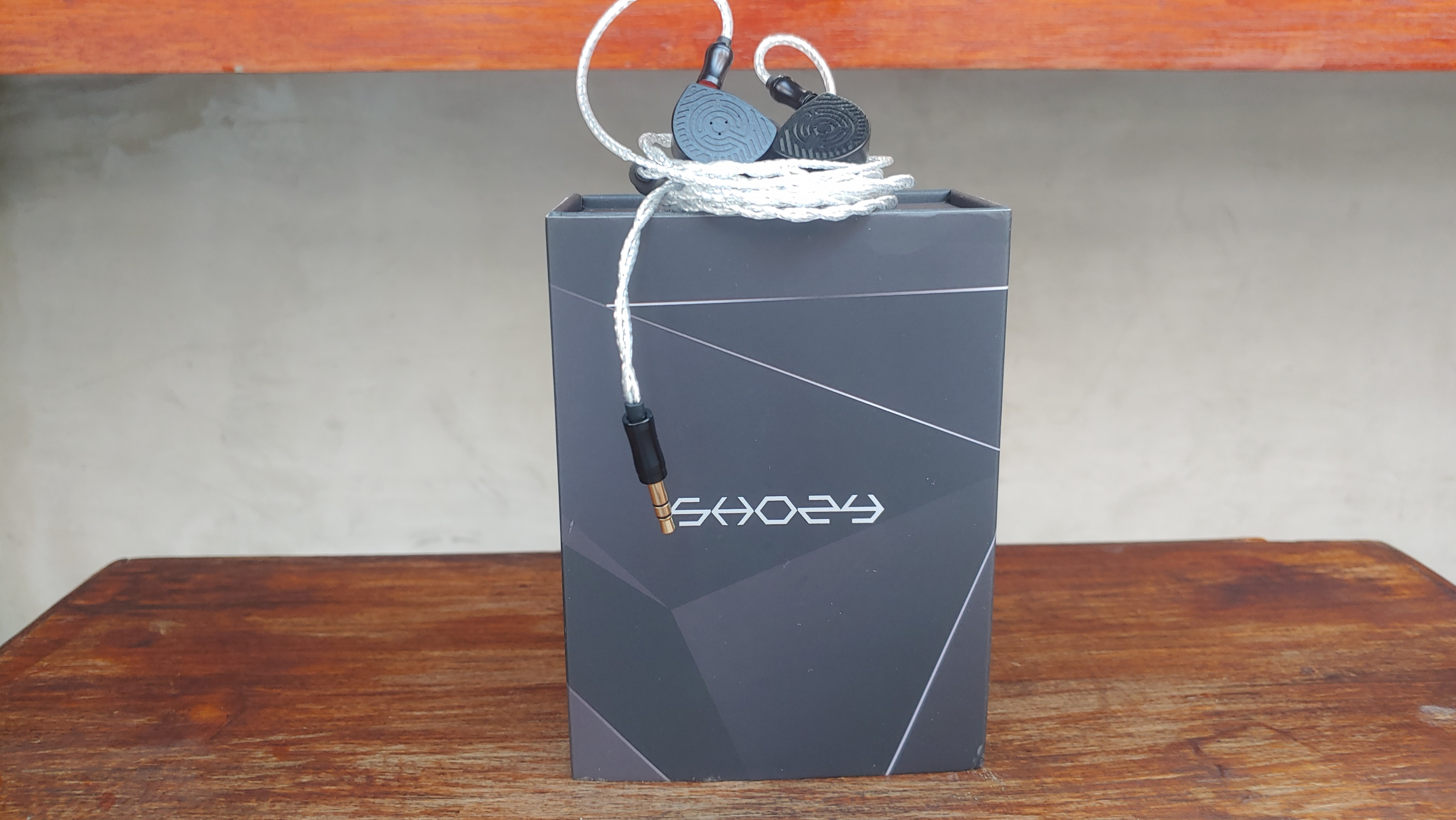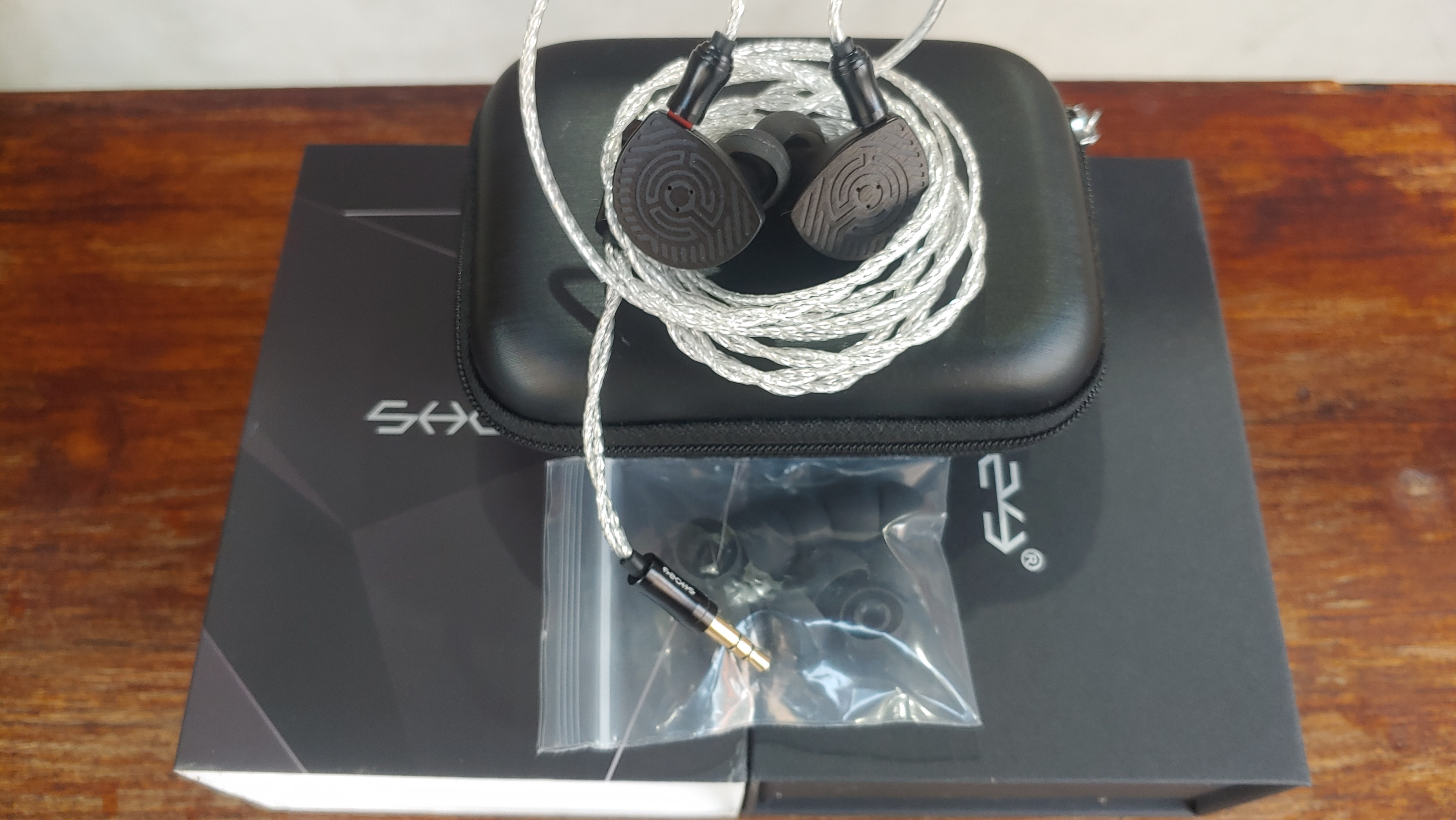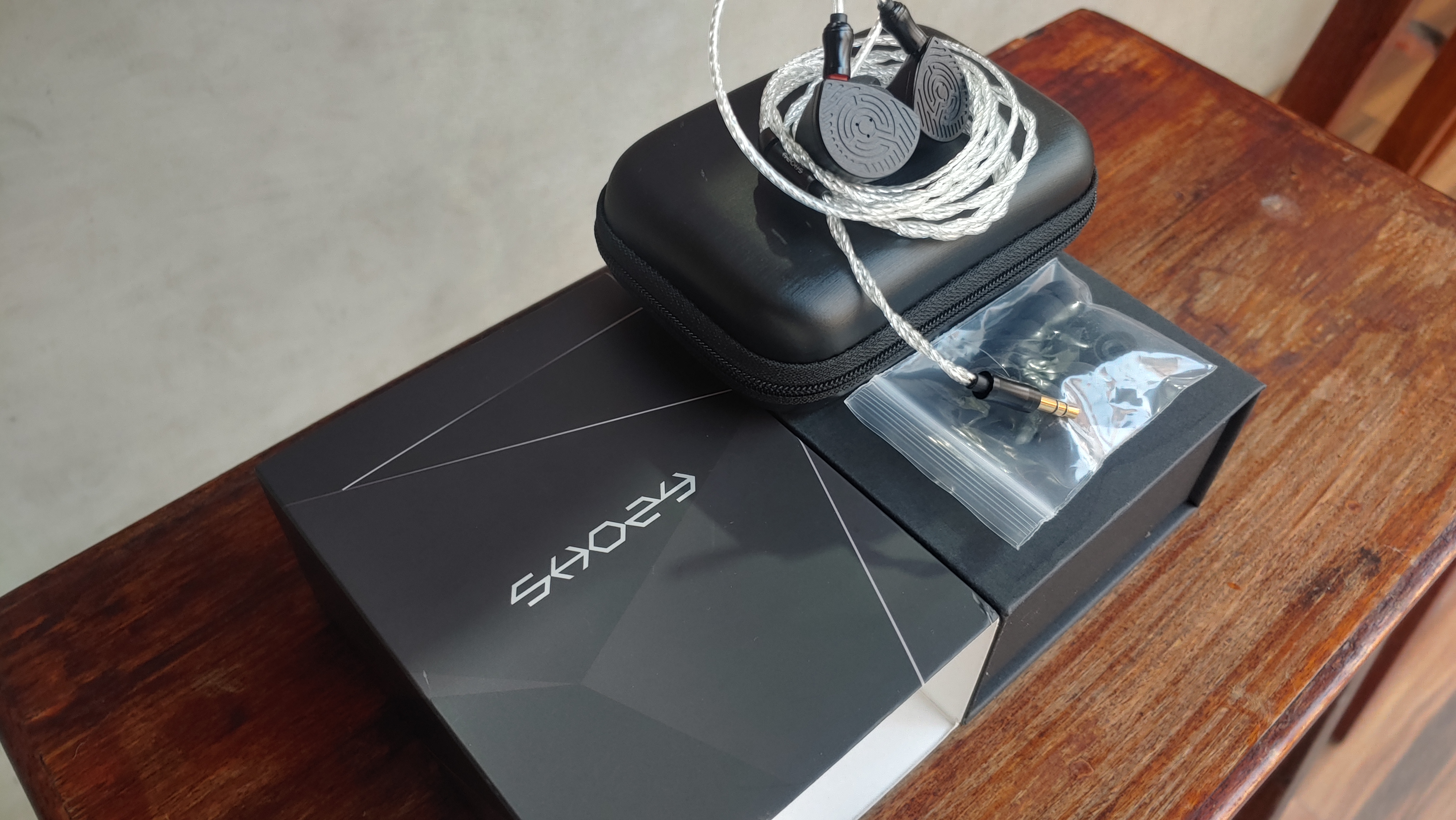DISCLAIMER
I would like to thank Linsoul for providing this review unit.
The Shozy P20 can be gotten here: https://www.linsoul.com/products/shozy-p20 (no affiliate links).

SPECIFICATIONS
ACCESSORIES
Other than the IEM, these are included:
- 3 pairs of wide-bore silicone eartips (S/M/L/)
- 3 pairs of narrow-bore silicone eartips (S/M/L)
- Cable
- Carrying case
The accessories are serviceable for a $100ish planar IEM. It isn't the best though, as we are missing foam tips and a modular cable, something that may be offered in a similarly priced competitor.

We have a selection of 2 variants of silicone tips. The wide-bore ones boost treble and enhance soundstage, whereas the narrow-bore ones increase bass, with some compromise in staging.

We have no information on the stock cable materials, though it is a disappointment, being thin and tangling easily. Thankfully, it has a chin cinch, though there is a smattering of microphonics. During ordering, one can opt for a 3.5 mm or 4.4 mm terminated version.

Last but not least, we have a semi-rigid zipper carrying case. This is tough enough to withstand compressive forces, with an inner soft lining and webbing.
The rest of this review was done with the stock cable and stock wide-bore silicone tips. No aftermarket accessories were used, so as not to add any confounders to the sound.
BUILD/COMFORT

The P20's housings is made of black matte resin, with a cool carved maze-like faceplate. It certainly is quite unique aesthetically.
The shells have moderate weight and lie on the larger side, though thankfully I found the comfort to be okay for longer listening sessions.

The P20 is a vented IEM and hence isolation is bang average. Despite the vents, I encountered driver flex on my pair, though this is semi-dependent on eartip choice and ear anatomy.
INTERNALS
The P20 houses a 14.5 mm planar driver.
DRIVABILITY
I tested the P20 with the following sources:
- Apple dongle
- Cayin RU7
- Chord Mojo 2
- Fiio KA11 dongle
- Fiio KA17 dongle
- Khadas Tone Board -> Schiit Asgard 3 amp
- Questyle M15 DAC/AMP dongle
- Sony Walkman NW A-55 DAP (Walkman One WM1Z Plus v2 Mod)
- Sony Walkman NW A-55 DAP (Walkman One Neutral Mod)
- Sony Walkman NW WM1A DAP (Walkman One WM1Z Plus v2 Mod)
- Smartphone
This IEM is relatively difficult to drive. Amplification is recommended to scale soundstage, bass tightness and dynamics.
SOUND & TECHNICALITIES

Graph of the Shozy P20 via IEC711 coupler. 8 kHz is a coupler artefact peak.
Tonally, the P20 is a warm and bassy IEM, with note weight on the thicker side.
The P20 has a predilection for the sub-bass frequencies, with decent extension. Quantity-wise, it is north of neutral, and when well amplified, the bass is impactful and textured, with moderate speed. We do run into some mid-bass bleed though.
There is a slight lower midrange depression, with this region warmed tremendously by the copious bass. This adds lots of heft to this frequency band, though there is some veiling of sonics as a result. With a 7 dB ear gain in the upper mids, vocals are forwards but not shouty.
The P20 has a dark treble, with limited air and extension. Trebleheads will scoff about the tuning, but this is a safe IEM for our treble-sensitive brethren. Sibilant-free sonics greet the listener, with no harshness in this region.
Like most planar IEMs, the P20 has some element of planar timbre, though it isn't the worst miscreant in this arena.
When discussing technicalities, the P20 has a wide soundstage (depth and height are average). It isn't the most resolving or micro-detailed set - this is in part influenced by the dark treble - so analytical-heads best look elsewhere. Imaging, layering and instrument separation are middling and nothing to write home about. Note edges are also blunted, but this takes the harshness off somewhat.
COMPARISONS

The P20 will be compared against other planar IEMs. Single DDs, multi-BAs, and hybrids are left out as the different driver types have their pros and cons.
Letshuoer S12 Pro
The S12 Pro is a bright V-shaped IEM, with much greater treble emphasis than the P20. The S12 Pro is more extended in the treble, but we run into the dreaded S word of sibilance and harshness.
The S12 Pro has a more metallic timbre, but it has better technical chops in micro-detailing, imaging and instrument separation. Soundstage goes to the P20.
Hidizs MP145
The MP145 has 3 tuning nozzles, to vary the frequency response amongst variations of a U-shaped tonality, and thus it has superior versatility. The MP145 has a more extended treble, with greater clarity and sparkle.
The MP145 has a killer soundstage, easily dwarfing that of the P20's. Imaging and micro-detailing are also slightly improved on the MP145.
The MP145 is harder to drive, and it also has a larger shell, which may cause fitting issues for some consumers.
CONCLUSIONS

In the big scheme of things, amongst the slew of planar releases, where does the Shozy P20 lie? Honestly, it falls squarely in the middle, being an average contender in most departments. Verily, one can describe the P20 as a jack of all trades but master of none.
The tuning is fatigue and sibilant-free, with a warm and bassy soundscape that is pleasant enough. When juiced well, the big bass is impactful while still keeping texture, albeit there is some mid-bass bleed. The huge bass does eat into the midrange, which obscures layering and micro-detailing. The treble, while smooth and without harshness, may not be the cup-of-tea for trebleheads.
While soundstage is commendable in terms of width, the rest of the technical aspects are quite meh. Glaringly, there is also driver flex, which is a potential deal-breaker for some consumers. Fortunately, the accessories are okay, though this IEM isn't the easiest to drive off a weaker source.
In the cut-throat planar wars, the P20 is certainly not an outright flop. However, being average is still a death sentence of some sorts, as this equates to being forgettable. Indeed, once a new and shinier toy releases next week, the ears and wallets of audiophiles will be captured elsewhere, and sadly, this IEM might be relegated to a footnote on audio forums.
I would like to thank Linsoul for providing this review unit.
The Shozy P20 can be gotten here: https://www.linsoul.com/products/shozy-p20 (no affiliate links).

SPECIFICATIONS
- Driver configuration: 14.5 mm planar driver
- Frequency response: 5 Hz - 40 kHz
- Impedance: 30 Ω
- Sensitivity: 105 dB/mW
- Cable: 2-pin, 0.78 mm; modular cable with 3.5 mm and 4.4 mm terminals; no information about cable materials
- Tested at: $139 USD
ACCESSORIES
Other than the IEM, these are included:
- 3 pairs of wide-bore silicone eartips (S/M/L/)
- 3 pairs of narrow-bore silicone eartips (S/M/L)
- Cable
- Carrying case
The accessories are serviceable for a $100ish planar IEM. It isn't the best though, as we are missing foam tips and a modular cable, something that may be offered in a similarly priced competitor.

We have a selection of 2 variants of silicone tips. The wide-bore ones boost treble and enhance soundstage, whereas the narrow-bore ones increase bass, with some compromise in staging.

We have no information on the stock cable materials, though it is a disappointment, being thin and tangling easily. Thankfully, it has a chin cinch, though there is a smattering of microphonics. During ordering, one can opt for a 3.5 mm or 4.4 mm terminated version.

Last but not least, we have a semi-rigid zipper carrying case. This is tough enough to withstand compressive forces, with an inner soft lining and webbing.
The rest of this review was done with the stock cable and stock wide-bore silicone tips. No aftermarket accessories were used, so as not to add any confounders to the sound.
BUILD/COMFORT

The P20's housings is made of black matte resin, with a cool carved maze-like faceplate. It certainly is quite unique aesthetically.
The shells have moderate weight and lie on the larger side, though thankfully I found the comfort to be okay for longer listening sessions.

The P20 is a vented IEM and hence isolation is bang average. Despite the vents, I encountered driver flex on my pair, though this is semi-dependent on eartip choice and ear anatomy.
INTERNALS
The P20 houses a 14.5 mm planar driver.
DRIVABILITY
I tested the P20 with the following sources:
- Apple dongle
- Cayin RU7
- Chord Mojo 2
- Fiio KA11 dongle
- Fiio KA17 dongle
- Khadas Tone Board -> Schiit Asgard 3 amp
- Questyle M15 DAC/AMP dongle
- Sony Walkman NW A-55 DAP (Walkman One WM1Z Plus v2 Mod)
- Sony Walkman NW A-55 DAP (Walkman One Neutral Mod)
- Sony Walkman NW WM1A DAP (Walkman One WM1Z Plus v2 Mod)
- Smartphone
This IEM is relatively difficult to drive. Amplification is recommended to scale soundstage, bass tightness and dynamics.
SOUND & TECHNICALITIES

Graph of the Shozy P20 via IEC711 coupler. 8 kHz is a coupler artefact peak.
Tonally, the P20 is a warm and bassy IEM, with note weight on the thicker side.
The P20 has a predilection for the sub-bass frequencies, with decent extension. Quantity-wise, it is north of neutral, and when well amplified, the bass is impactful and textured, with moderate speed. We do run into some mid-bass bleed though.
There is a slight lower midrange depression, with this region warmed tremendously by the copious bass. This adds lots of heft to this frequency band, though there is some veiling of sonics as a result. With a 7 dB ear gain in the upper mids, vocals are forwards but not shouty.
The P20 has a dark treble, with limited air and extension. Trebleheads will scoff about the tuning, but this is a safe IEM for our treble-sensitive brethren. Sibilant-free sonics greet the listener, with no harshness in this region.
Like most planar IEMs, the P20 has some element of planar timbre, though it isn't the worst miscreant in this arena.
When discussing technicalities, the P20 has a wide soundstage (depth and height are average). It isn't the most resolving or micro-detailed set - this is in part influenced by the dark treble - so analytical-heads best look elsewhere. Imaging, layering and instrument separation are middling and nothing to write home about. Note edges are also blunted, but this takes the harshness off somewhat.
COMPARISONS

The P20 will be compared against other planar IEMs. Single DDs, multi-BAs, and hybrids are left out as the different driver types have their pros and cons.
Letshuoer S12 Pro
The S12 Pro is a bright V-shaped IEM, with much greater treble emphasis than the P20. The S12 Pro is more extended in the treble, but we run into the dreaded S word of sibilance and harshness.
The S12 Pro has a more metallic timbre, but it has better technical chops in micro-detailing, imaging and instrument separation. Soundstage goes to the P20.
Hidizs MP145
The MP145 has 3 tuning nozzles, to vary the frequency response amongst variations of a U-shaped tonality, and thus it has superior versatility. The MP145 has a more extended treble, with greater clarity and sparkle.
The MP145 has a killer soundstage, easily dwarfing that of the P20's. Imaging and micro-detailing are also slightly improved on the MP145.
The MP145 is harder to drive, and it also has a larger shell, which may cause fitting issues for some consumers.
CONCLUSIONS

In the big scheme of things, amongst the slew of planar releases, where does the Shozy P20 lie? Honestly, it falls squarely in the middle, being an average contender in most departments. Verily, one can describe the P20 as a jack of all trades but master of none.
The tuning is fatigue and sibilant-free, with a warm and bassy soundscape that is pleasant enough. When juiced well, the big bass is impactful while still keeping texture, albeit there is some mid-bass bleed. The huge bass does eat into the midrange, which obscures layering and micro-detailing. The treble, while smooth and without harshness, may not be the cup-of-tea for trebleheads.
While soundstage is commendable in terms of width, the rest of the technical aspects are quite meh. Glaringly, there is also driver flex, which is a potential deal-breaker for some consumers. Fortunately, the accessories are okay, though this IEM isn't the easiest to drive off a weaker source.
In the cut-throat planar wars, the P20 is certainly not an outright flop. However, being average is still a death sentence of some sorts, as this equates to being forgettable. Indeed, once a new and shinier toy releases next week, the ears and wallets of audiophiles will be captured elsewhere, and sadly, this IEM might be relegated to a footnote on audio forums.

